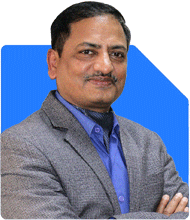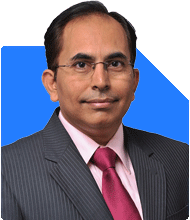Sir, After closing my home loan, I have free amount of 70kpm which I am looking to invest with low risk. I have planned in the below manner:
10 kpm - in gold etf or gold mf (which is better)
5 kpm - in NPS vatsalya scheme (for elder son 15y age)
5 kpm - in NPS vatsalya scheme (for younger son 10y age)
20 kpm - in RD for next year school fees of both sons
15 kpm - in RD for family vacation
15 kpm - in MF SIP.
PLease suggest. Will NPS be a good option for our sons future? DO you suggest any other option? I am already investing 40kpm in SIP MF, 10kpm in Term plan of SA 1.5 CR. 20 kpm in conventional Insurance plans. 40 kpm in my PF & PPF. 10kpm in my NPS
Ans: Your current investment strategy is well thought out, considering various goals for your family’s future. With a monthly surplus of Rs 70,000 after closing your home loan, you’ve allocated this amount towards multiple financial goals. Let's assess each component of your plan and evaluate its effectiveness for low-risk investments while considering your children's future.
Gold ETF vs. Gold Mutual Fund
Gold ETF: Gold ETFs are cost-efficient and directly linked to the price of gold. They are traded like stocks and have lower expense ratios compared to gold mutual funds. They provide liquidity and allow you to hold physical gold in electronic form without the storage hassle.
Gold Mutual Fund: Gold mutual funds invest in gold ETFs. These funds are more accessible, especially for investors who don’t have a demat account. However, they come with a higher expense ratio compared to ETFs.
For long-term investment in gold, Gold ETFs would be a better choice because of lower costs and direct linkage to gold prices. However, both options are relatively safe for gold investments.
NPS Vatsalya Scheme for Children
You’ve planned to invest Rs 5,000 per month for each of your sons in the NPS Vatsalya scheme. Let’s analyse whether NPS is the best option for your children's future.
NPS Benefits: NPS is a low-cost, government-backed pension scheme. While it offers tax benefits, it is primarily a retirement planning tool. Since NPS locks in the corpus until retirement age, it may not be the most ideal choice for children's education or other financial needs before they turn 60.
For your sons’ future, it might be better to consider long-term equity mutual funds or child plans that provide flexibility and potential higher returns for educational needs or other significant life events. Mutual funds allow partial withdrawals and can align better with milestones like higher education or marriage.
Suggested Alternatives:
Consider equity mutual funds with a long-term horizon, which provide better growth potential for your sons' future goals.
You could also explore child education plans that offer benefits aligned with specific milestones like higher education.
Recurring Deposits (RDs) for Short-Term Goals
20K for School Fees: This allocation is prudent. RDs are safe, and since the goal is short-term, using an RD for your children’s school fees next year is a sound strategy. It ensures safety and liquidity.
15K for Family Vacation: Saving in an RD for your family vacation is a good idea for the short term. It keeps your savings safe and ensures you can use the funds when needed without risking market fluctuations.
Assessment:
For both these short-term goals, RDs are a low-risk and appropriate choice.
Mutual Fund SIPs
15K for Mutual Fund SIP: Allocating Rs 15,000 towards equity mutual funds via SIPs is a smart move for wealth creation. Equity mutual funds are suitable for long-term goals, and SIPs bring discipline and rupee cost averaging.
Since you are already investing Rs 40,000 per month in mutual funds, increasing this by Rs 15,000 strengthens your portfolio and ensures long-term growth potential. This balance between equity investments and safer options like RDs and gold is a well-rounded strategy.
Insight:
Diversifying your SIPs across large-cap, mid-cap, and hybrid funds can help manage risk and improve returns over time.
Ensure you are invested in actively managed mutual funds instead of index funds to maximize your returns, as actively managed funds have the potential to outperform in different market conditions.
Evaluating Your Current Investments
Rs 40K in SIPs: Your existing investment of Rs 40,000 per month in mutual funds shows a good focus on long-term growth. Since mutual funds offer better growth potential than traditional savings, it is a good strategy to balance risk and reward.
Rs 10K in Term Plan (SA 1.5 CR): A term plan is an essential part of any financial plan, especially for a family. Your term plan with a sum assured of Rs 1.5 crore is adequate to provide for your family in case of any unforeseen circumstances. Continue with this policy as it serves to protect your family financially.
Rs 20K in Conventional Insurance Plans: Conventional insurance plans often provide lower returns compared to mutual funds or other investment options. They usually mix insurance and investment, which results in sub-optimal returns. You may want to reconsider whether these plans align with your long-term goals. Instead, pure term insurance for protection, combined with mutual funds for growth, usually provides better results.
Rs 40K in PF & PPF: Your existing contributions to PF and PPF are ideal for low-risk, long-term saving. These schemes offer safe, tax-efficient growth. Keep contributing as they ensure stability in your portfolio.
Rs 10K in NPS: Investing in NPS for your own retirement is a sound decision, as it provides tax benefits and helps you build a retirement corpus with a mix of equity and debt exposure.
Suggestions for Improvement
NPS for Children: As discussed, NPS is not the best fit for your sons’ future. For their education and other life goals, consider investing in mutual funds or dedicated child plans instead.
Reevaluate Conventional Insurance Plans: These plans often come with low returns and high costs. If possible, shift the investment component to equity mutual funds or SIPs. You already have sufficient life insurance coverage through your term plan.
Increase SIP Contributions Gradually: Over time, as your income grows, try to increase your SIP contributions. Even a 10-15% increase every year can significantly boost your wealth over the long term, thanks to the power of compounding.
Ensure Proper Allocation for Retirement: While you are focusing on your children’s future and short-term goals, ensure that your retirement planning is not compromised. Continue contributions to PF, PPF, and NPS while allocating enough towards equity mutual funds for long-term growth.
Final Insights
Your approach is a solid mix of safety and growth, reflecting thoughtful planning. The inclusion of RDs for short-term goals, gold for diversification, and mutual funds for long-term wealth creation provides balance. However, reconsidering NPS for your children and conventional insurance plans can optimize your strategy further.
Your commitment to Rs 40K in PF, PPF, and Rs 10K in your NPS ensures long-term stability. The additional Rs 70K per month is wisely planned for both low-risk and growth-oriented goals. Keep reviewing your strategy periodically to adjust to any changes in income, goals, or market conditions.
Best Regards,
K. Ramalingam, MBA, CFP,
Chief Financial Planner,
www.holisticinvestment.in
https://www.youtube.com/@HolisticInvestment




























